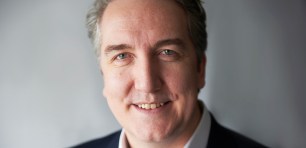
Source: Adobe Stock
With the operational and reputational crisis at Boeing continuing to escalate, CEO Dave Calhoun has finally announced he will step down, along with the board chairman and the head of their passenger plane division.
While Calhoun is just the latest CEO to fall on his sword, it’s a reminder that the buck stops – or should stop – with the person at the top.
In the case of the Boeing CEO, it seems to have been little more than an inevitability, after his customers – some of the world’s biggest airlines – took the unprecedented step of speaking directly to the board to vent their frustration at the seemingly endless catalogue of safety issues with Boeing aircraft.
The airline’s shares plunged 25% since the beginning of the year after a door blew off an Alaska Airlines plane in early January and wheels fell off another aircraft taking off from San Francisco.
My American colleague Jeff Chatterton described Calhoun’s announcement as: “The least shocking news since we discovered it’s cold in the Arctic”. He called it a classic example of “jump or we’ll push”.
And PR Daily’s Allison Carter concluded: “There is a point at which trust can no longer be repaired with the same leadership. Boeing had reached that point”.
In many sporting codes, the coach is sacked when the team performance slumps or when there is a scandal, like turning a blind eye to drug-taking. It rarely even makes the headlines for more than a couple of days.
Yet in the business world, we continue to see too many examples where the CEO clings on to office after a succession of terrible financial results, or a crisis which could have been, and should have been, recognised in advance and steps taken to prevent it. After trust has been exhausted and the share price is tanking.
It’s never an easy decision when a CEO should go. But as the Australian executive recruitment company Blenheim Partners asked: “What happened to honour? . . . Why are CEOs not falling on their sword and exiting with as much respect and as little public reputation damage as can be achieved?”
There are some countries where the immediate response to a corporate crisis is to arrest the CEO and top management. And somewhere the consequences can be even more dire. Take the notorious Sanlu milk adulteration crisis in China, where the CEO was jailed for life, three other executives received between five and 15 years in prison, and two contractors found to be at fault were executed.
While that may be somewhat extreme, the departure of a CEO should be done professionally and in the best interests of the organisation.
Consider what happened at Boeing in late March. The Chair and the passenger plane boss left “with immediate effect”. The CEO also announced he would resign, yet will stay in place “until the end of the year”. That’s one of those “dead man walking” management scenarios that are barely sustainable and severely test the limits of good governance.
Similarly, Tom Seymour at PwC Australia announced in May 2023 he was stepping down as CEO following a tax policy scandal that engulfed the company, then rather surprisingly said he would remain as a partner until he retired in September. But come July he was terminated, along with seven other partners.
A departing CEO might try to argue that they alone have the skills to see the company through the next phase (very unlikely and probably a reflection of ego rather than capability). Or that more time is needed to find a replacement (ie the Board has failed to put a management succession plan in place).
However, the reality is that if the CEO is to go in the wake of a crisis, a clean-cut is most often the best way forward – for both the former CEO and the company. That should be pretty much Crisis Management 101.
Dr Tony Jaques is an expert on issue and crisis management and risk communication. He is CEO of Melbourne-based consultancy Issue Outcomes and his latest book is Crisis Counsel: Navigating Legal and Communication Conflict (Rothstein, New York, 2020).
Handpicked for you

CBA boss suggests ban on cash payments above $500



COMMENTS
SmartCompany is committed to hosting lively discussions. Help us keep the conversation useful, interesting and welcoming. We aim to publish comments quickly in the interest of promoting robust conversation, but we’re a small team and we deploy filters to protect against legal risk. Occasionally your comment may be held up while it is being reviewed, but we’re working as fast as we can to keep the conversation rolling.
The SmartCompany comment section is members-only content. Please subscribe to leave a comment.
The SmartCompany comment section is members-only content. Please login to leave a comment.